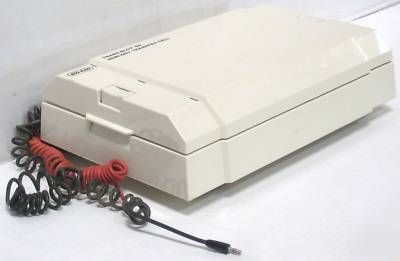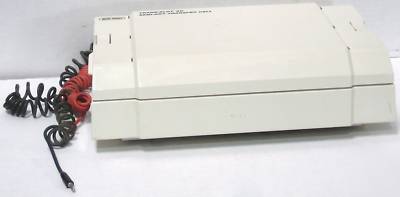Tristate Machinery Dismantlers Forum > MICHIGAN
> Motors and tools
> New
> With Warranty
> Bio-rad trans-blot sd semi-dry transfer electroph. cell
Bio-rad trans-blot sd semi-dry transfer electroph. cell
This listing is for an electrophoresis cell.
* Description: Trans-Blot Dry Transfer Cell for Electrophoresis
Trans-Blot SD Semi-Dry Electrophoretic Transfer Cell
Blotting was first performed by Southern1 in 1975 with the transfer of DNA from agarose gels to nitrocellulose membranes. Blotting has subsequently been applied to RNA2-4 and protein5,6 from both agarose and polyacrylamide gels. Membrane materials have been expanded to include PVDF for improved protein binding capacity. To overcome the inefficiency of capillary transfers, electric current has been adopted for eluting proteins from polyacrylamide gels, as first described by Towbin et al.7 in 1979. Since that time, electrophoretic transfer has also been used for DNA and RNA blotting.8-14
For blotting PCR fragments, plasmid and vector DNA, and RNA with the SD cell, use the Trans-Blot SD DNA blotting kit. DNA or RNA can be blotted from agarose gel to Zeta-Probe GT membrane in only 10 minutes, without any gel pretreatments. The kit comes complete with DNA/RNA blotting accessories and a detailed instruction manual.
Semi-dry blotting was first reported by Kyhse-Andersen in 1984.15 Blotting was performed with plate electrodes in a horizontal configuration. The gel and nitrocellulose membrane were sandwiched between sheets of buffer-soaked filter paper, which served as the ion reservoir and replaced the buffer tank. The plate electrodes, separated only by the filter paper stack, provided high field strength (V/cm) across the gel, and very efficient, rapid transfers.
The Trans-Blot semi-dry transfer cell incorporates the original concepts of semi-dry blotting along with innovative features for quick set-up and ease of use. The platinum-coated titanium and stainless steel electrode pair provides efficient, background-free blotting with trouble-free service.
* Trans-Blot SD body Molded polycarbonate
* Anode Platinum-coated titanium
* Cathode Stainless steel
* Anode platform Precision machined acrylic
* Overall size: 37 cm x 24 cm x 11 cm
* Maximum gel size: 25 cm x 18.5 cm
* Cleaning: Do not immerse the unit in liquid. Use special care when cleaning the anode plate to avoid scratching or marring the platinum. Do not use abrasives or strong detergents. The cathode plate (stainless steel) can be cleaned with a mild abrasive to remove salt that may deposit during normal operation. The entire unit can also be periodically disassembled and cleaned with water to remove salt deposits.
* Chemical compatibility: The semi-dry blotter components are not compatible with chlorinated hydrocarbons (e.g., chloroform), aromatic hydrocarbons (e.g., toluene, benzene), or acetone. Use of organic solvents voids all warranties.



